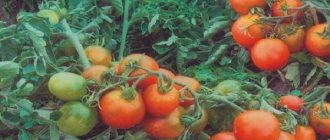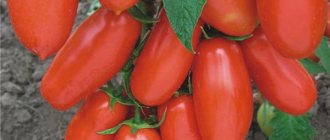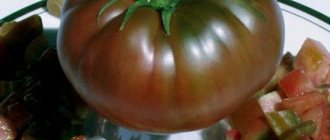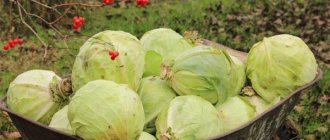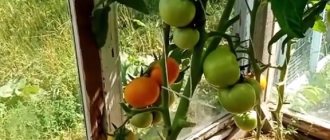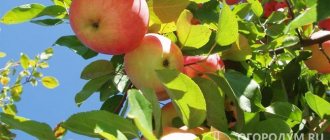History of selection and region of growth
For the first time, the melon crop Kholodok appeared in the deserts of Africa.
The Egyptians were able to develop this variety many years ago. The variety came to Russia in the 8th century. At first, Kholodok was small in size and had a cloying taste with a slight bitterness. However, it was cultivated (breeders crossed the original Kholodok with two more types of watermelon) and the berry acquired a sweet taste and grew significantly in size. The Volgograd region is considered the birthplace of this melon crop.
It brings good harvests in the Volga region, Southern Urals, and Astrakhan. The entire area of our homeland is an excellent area for growing crops for industrial purposes. Astrakhan is considered the capital of the watermelon business.
Pros and cons of the variety
Let's take a closer look at all the advantages and disadvantages of this fruit crop.
pros
- the variety is early ripening, which makes it possible to get a harvest even in a cool climate;
- taste qualities are very high;
- product characteristics are also at the proper level;
- the variety is very productive;
- watermelons can be stored for a long time;
- have high shelf life and transportability;
- The culture is resistant to cold.
Minuses
- because of its long shoots, the Kholodok watermelon needs space for growth and development - and quite a decent one;
- side shoots grow quickly and in large numbers - they require constant monitoring and pruning;
- Watermelon grows well only in warmth and light - in the shade and cold, growth and development slow down noticeably.
Characteristics of the variety
It differs from other representatives of its species in its unique ease of care, long shelf life and excellent taste. The plant can be grown indoors and outdoors. Chill is characterized by low calorie content and a huge amount of micronutrients. It is impossible to allocate a small area for its cultivation; it will begin to grow and branch.
One shoot can reach 5 m in length.
The foliage of the plant is green, the berries are slightly elongated, the weight of one fruit is about 4 kg. The skin is green, of medium thickness. When cut, the berry is red-grained, the pulp is tasty with a pink tint.
Coldweed survives low temperatures without problems, but it is better to grow it in warm climates with long summers. They begin to pick berries at the end of summer. Stored until the first frost.
Planting watermelon seeds Chill in open ground
We recommend reading our other articles
- How to feed peonies in spring?
- Description of the Peking duck breed
- Cherry jam
- How to feed onions?
Watermelon planting scheme
In order for the Chill watermelon to grow quickly, the soil is fertilized in advance (at least 2 weeks in advance); any fertilizer that is used on the site is suitable for this, but one that contains nitrogen is recommended.
The scheme for planting a watermelon in a permanent place depends on where it will grow. In greenhouses, an area of 70x70 cm is sufficient, and in open ground - 140x110 cm.
A hole 8-10 cm deep is dug under each seed or sprout, fertilizers are placed there (if the ground is not fertilized in advance), the crop is planted, dug in and watered.
Landing in the ground
Watermelons with 5-6 leaves are transferred to an open area. To grow the crop, choose an area well heated by the sun. Plantings are provided with protection from the wind. The optimal location is the south or south-east side of the site.
Before planting the Kholodok variety, it is recommended to grow winter wheat, onions, cabbage, and legumes in the garden. Plants are not planted after tomatoes, peppers, potatoes, eggplants, melons, and zucchini.
Important! After planting a watermelon, re-cultivation of the crop is allowed after 6 years.
Photo of watermelon Chill after planting in an open area:
Watermelon prefers sandy loam or sandy soil. The site begins to be prepared in the fall, when the ground is dug up. Additionally for 1 sq. m of soil, add 4 kg of compost and 100 g of complex fertilizer containing nitrogen, potassium and phosphorus.
The structure of heavy soil is improved with the help of river sand in the amount of 1 bucket. Fresh manure is not used to fertilize the soil.
The procedure for planting watermelons of the Kholodok variety in the ground:
- Holes are made in the garden bed at intervals of 100 cm. 140 cm are left between the rows.
- Each planting hole is watered abundantly.
- The seedlings are taken out of the containers and transferred to the holes.
- Plants are deepened into the ground up to the cotyledon leaves.
- The soil is compacted and a small layer of sand is poured on top.
- The seedlings are watered abundantly with warm water.
At first, watermelons are covered from sunlight with paper. It is removed after a couple of days, when the plants recover after transplantation.
In regions with a cool climate, the Kholodok variety is grown in greenhouses. Planting is carried out in a similar manner. A gap of 70 cm is made between plants. Plants can be planted under shelter earlier if the soil has warmed up sufficiently after winter.
Where, when and how best to grow watermelon Chill?
Planting in open soil should be done no earlier than the end of May, otherwise the plant will not take root. The location should be sunny without drafts. If the climate in your region is harsh, then plant the seedlings in a greenhouse or greenhouse.
Not every gardener can grow a crop. The plant needs constant care. If the conditions are not right, the berries will not grow as sweet as they should be.
Seed preparation
Today, watermelon seeds can be purchased at any gardener's market or in a specialized store. However, the melon grower must be sure that the seeds he purchased are truly high-quality planting material.
One Chill seed reaches 1.5 cm - for this crop this figure is considered significant. The bone is rough to the touch.
The seeds respond well to heating; this activity needs to be carried out within a week; it is enough to expose the seeds to the sun. You can warm them up at home using special heaters. At home, bones are dried for 4 hours a day for a week.
Before planting, the seeds should be kept in a manganese solution and then washed under running water.
Sowing seeds
You can plant watermelon seeds using 2 methods: on seedlings and in the soil. Let's look at each of them:
- For seedlings. Watermelon seeds are sown in prepared pots filled with soil. Planting is carried out according to the 70x150 cm pattern. The best time for planting seeds for seedlings is April - if the seedlings are transplanted into a greenhouse, and the end of May - if they are transplanted into open soil. The seedlings are ready for transplanting after 1 month; 4 full-fledged leaves are formed on the plant.
- In open ground. Some gardeners plant seeds directly in open ground. When the plants begin to sprout, weak and diseased shoots are removed, leaving only strong specimens. This method is not entirely convenient, since not every seed can live in open ground. It is better to use the first option.
Seedling care
Watermelon seedlings will begin to grow and fully develop if three main conditions are met:
- constant watering;
- 12 hour lighting;
- application of fertilizers.
Seedlings should be watered with settled, non-cold water. During watering, moisture should not get on the leaves. If natural light is not enough, then special phytolamps should be installed.
After the third leaf appears on the plant, the crop is fed with slurry or a complex fertilizer. Before planting in the garden, seedlings are hardened off outdoors. On the first day, they are taken out for a couple of hours, then for three, four hours, etc. This procedure helps the seedlings get used to fresh air.
Thanks to hardening, Chill takes root faster in open soil.
Landing in the ground
The first step is to choose the right soil, because watermelon does not thrive in every soil. Lightweight, breathable soils are suitable. Planting can be done in 2 ways:
- Planting in a greenhouse. This method is applicable for central Russia. Plants are planted in rows, with about 80 cm left between seedlings. Watermelon Chill occupies a large area and has a powerful root system, so distance must be maintained. The width between the rows should be about 1.5 m. The lashes are tied to trellises. For branches up to 1.5 m in length, all side shoots are cut off. It is necessary to pinch shoots above 0.5 m.
- Planting in open soil. This method is suitable for any southern region. The ground must be warmed up, the plant is planted to a depth of 0.1 m. The chill develops “in the spread”: using the standard method.
What are the difficulties of caring for a watermelon?
It was stated above that the first difficulty in growing watermelons of the Kholodok variety is the selection of seeds, the second difficulty is related to care. The plant does not need just watering or fertilizing. Comprehensive measures are needed here.
- When the sprouts grow, they need to be tied up. The garter makes growing much easier and saves space. To do this, each plant should be tied to a trellis approximately 50 cm from the ground. You can tie up a crop growing in a greenhouse or in open ground. This method allows not only to simplify care, but also to provide each fruit, leaf and stem with maximum illumination.
- To get large fruits, you need to remove all excess vines in time. After gartering, the side shoots are removed. If new ones appear, they are pinched over 1-3 leaves. It is important to note that it is necessary to cut off excess pagons not only from tied crops, but also if the plant spreads along the ground. This will improve the illumination.
- As it grows, it is necessary not only to remove the side lashes, but also the excess ovaries. No more than 3 watermelons should ripen on each individual plant!
- If you tie up the Kholodok watermelon, it is important to tie up the fruits themselves, or rather, put them in a mesh bag and tie it to the trellis. Otherwise, the fruit will simply break off the peg on which it grows and break.
- It is necessary to water in moderation. At first, while the plant is developing, you can pour more water, but when the fruits appear, it is important to reduce watering, otherwise the roots will rot or the watermelons will be watery.
- The variety has an average susceptibility to some diseases, for example, powdery mildew or anthracnose, but timely treatment against pests and diseases is necessary so as not to lose the harvest. It is also important to fertilize to enhance growth.
- If the plant is grown without a garter, you need to place planks, cardboard or something like that under each fruit so that the watermelon does not come into contact with the ground, otherwise it may begin to rot.
| · Planting seeds in open ground is carried out after preliminary fertilization of the soil. If a watermelon is planted in a greenhouse, then it is necessary to comply with the planting norm of 70x70 cm. And in open ground conditions, adhere to the norm of 140x110 cm. This planting method is less productive, unlike seedlings, due to the fact that many seeds may simply not sprout. |
General characteristics of the watermelon variety Kholodok
Kholodka’s place of birth is Russia, Volgograd region. Sancha Klavdiya Petrovna conducted experiments on crossing three varieties of watermelons at the Bykovskaya melon breeding experimental station, which resulted in the variety Kholodok. Watermelon is a medium-late variety in terms of ripening . From the moment the seeds are planted until the first fruits are received, about three months pass. The productivity is very high; from one hectare, under favorable weather conditions, you can harvest at least 30 tons of crop. From one square meter, a gardener can get 7 kilograms of watermelon.
Watermelon Chill
This variety is suitable for growing in greenhouses and open ground . You should not allocate a very small space for the watermelon, since as it grows, the plant will branch and grow in length.
The longest shoot of the watermelon Chill reaches a length of 5 meters.
The leaves of the seedling are bright green. The fruits are obtained in the shape of a slightly elongated ball, weighing from 4 to 4.5 kilograms . The color of the peel is green with a mesh pattern, the thickness is moderate. When cut open, a ripe watermelon has red, granular, juicy flesh with a pink tint and a sweet taste.
Watermelon Kholodok is classified as a medium-late ripening variety; its growing season is about three months.
Watermelon produces good yields throughout central Russia: the Volga region, the Southern Urals, Astrakhan, and the Volgograd region are ideal places for growing this sweet berry on an industrial scale.
Astrakhan became thanks to the decree of the Minister of Agriculture Alexei Gordeev.
Despite the fact that this watermelon variety tolerates low temperatures well, it is recommended for planting in regions with warm climates and long summers . The harvest takes place at the end of August.
History of selection and region of growth
The history of the origin of watermelon dates back centuries and originates from the Namib and Kolohari deserts. They were first discovered by the Egyptians 4 thousand years ago.
Watermelon Chill can withstand low temperatures and can be stored right up to frost.
The berry came to Russia in the 8th century AD from India . At first it was the size of a large orange and had a slightly bitter taste. Then, after cultivation, it began to resemble a modern watermelon.
Japanese breeders developed a square watermelon to make it easier to transport.
Advantages and disadvantages of the variety
Watermelon Chill has become widespread throughout the CIS countries. This is due to a certain number of its advantages:
- Precocity;
- Sweet , juicy pulp;
- Beautiful appearance ;
- High yield ;
- Long shelf life from three to five months;
- Resistance to transportation;
- Tolerates low air temperatures .
Watermelon Kholodok stands out among other varieties in that it tolerates transportation very well.
Along with its advantages, this berry variety has some disadvantages:
- Requires a lot of space . The length of the shoots reaches 5 meters.
- Increased formation of side shoots , you constantly have to monitor and remove this;
- Loves warmth and light.
Watermelon is edible entirely. You can make very tasty marmalade or jam from its skin.
Description and Application
Asparagus officinalis L. translated means medicinal asparagus; people call it “rabbit chill”. This type of asparagus is so named due to its medicinal qualities. Its shoots contain vitamins of group B (B15 B2, B6), C, PP, they are rich in carbohydrates and proteins. Thanks to this, asparagus lowers blood pressure, improves heart function, and helps eliminate excess salts from the body.
Asparagus officinalis is a fairly ancient crop. There are references to its use as food more than 4,000 years ago. Distributed wild in Europe and Asia. It has been bred in Russia since the 17th century. The hare's chill can be found in forests and meadows. It was cultivated quite widely in the 18th-19th centuries. and were considered a tasty vegetable for privileged individuals. Asparagus was also used as an ornamental plant, adding a small network of leaves to bouquets, and in the Baltics, peasants decorated their hats with it when going to church.
This type of asparagus can be eaten: in early spring, thick shoots grow, which are used for preparing vegetable dishes. However, vegetable varieties of asparagus officinalis taste better and have a higher yield, the most common of which are: early ripening - Early yellow; mid-season - Mary Washington; late ripening - Glory of Braunschweig.
Asparagus officinalis is a perennial plant that grows in one area for 15–20 years. It is dioecious, that is, male and female flowers are located on different plants. Pollinated by insects or wind.
The interesting qualities of the structure of this plant are that the stems, densely shrouded in green plates, do not have leaves. What we sometimes call leaves in asparagus are actually modified stems - cladodes. And the leaves of such a plant are underdeveloped and are located at the beginning of the branches in the form of small scales.
Medicinal properties
For medicinal purposes, fruits, rhizomes, above-ground mass (grass), and young shoots are used. The rhizome contains steroid saponins, asparagine, carbohydrates, essential oil, carotenoids, the greens contain glycosides, saponins, chelidonic and succinic acids, the young shoots contain nicotinic acid (vitamin PP), ascorbic acid (vitamin C), thiamine (vitamin B1) , riboflavin (vitamin B2), carotenoids. Berries include sugar, organic acids: citric and malic.
The herb and root extract is used to lower blood pressure, normalize liver function, and as a diuretic. Therefore, they are used for diseases of the liver, kidneys, cardiovascular system, for gout, rheumatic carditis, for diabetes, as a vitamin and sedative. Dishes made from chilli shoots have the same medicinal value as the herb.
For consumption, thick spring shoots are washed, peeled, boiled in slightly sweetened or salted water over low heat, tied in bunches in advance. During cooking, you need to make sure that all the shoots are completely immersed in water. Make sure they don't overcook.
Then they should be placed on a sieve and allowed to drain. Boiled asparagus is doused with sauce and sprinkled with aromatic herbs. They are also used for preparing side dishes, main courses, salads, or fried in breadcrumbs, like cauliflower. Fresh shoots are added to soups and preserved for the winter.
For decorating needs, summer green shoots are used to decorate bouquets. It is because of this that wild growing locations of the chill are rapidly decreasing. And therefore, to use this wonderful crop, it is better to grow varietal plants in the garden, which, by the way, are much more productive and nutritious.
Features of care
The plant will not be able to grow without care. Watermelon should be watered and fed regularly. Preventive treatments against pests and diseases occupy an important place.
Removing excess shoots provides the plant owner with a tasty and rich harvest. There are no more than 4 berries per bush.
In the greenhouse, it is necessary to provide the watermelon with air. The variety dies in high humidity. In closed ground, watermelons are tied up, the berries are put in nets or placed on stands.
Watering
Watering should be carried out once every 10 days. For 1 sq. m should pour out about 3 buckets of settled warm water. The amount of watering increases on sunny days and during flowering plants. In this case, water is added 2 times a week.
Additionally, moisten the soil between plantings. After adding water, the ground is cleared of grass and organic residues.
Loosening
Loosening is carried out on wet soil. When the watermelons grow, this procedure need not be carried out, because tools for working in the garden can damage the root system of the plants, as well as harm the berries themselves.
Top dressing
Watermelon Chill is fed twice in one season:
- During the formation of buds. Use complex fertilizers. One plant will require 5 g of potassium salt and 5 g of superphosphate. The products are applied to the ground or dissolved in water.
Trimming
Formative pruning helps get rid of excess shoots on the plant. This event also includes pinching the main vine; there should be 3 or 4 set fruits on the bush. A larger number of them leads to the appearance of small and tasteless berries.
Garter
After the seedlings have gotten a little stronger, they should be tied up. This event will significantly save time and effort for the owner of Kholodok watermelons.
Tied to a trellis at a height of 0.5 m from the ground. This is done to ensure that each plant receives sufficient light and warmth. Do not forget to cut off the side shoots of tied fruits.
Collecting seeds
There is no need to purchase Kholodok watermelon seeds if you can collect them yourself. The variety is not a hybrid species, so the seeds of the fruit are excellent for creating a harvest next year.
To collect seeds from a watermelon, you need to leave a couple of fruits on the plant; you should not remove them. The plants must be overripe. After which the fruit is cut and seeds of a dark shade are selected.
Natural selection is carried out: all the seeds are placed in water and those that sank to the bottom are suitable for growing next year. They are dried on a cloth and left in the sun. They should dry for about 1 week.
Watermelon seeds are stored in a simple cloth. Any closed containers cannot be used.
Variety care
The Kholodok variety needs constant care. Watermelons are watered and fed. To protect against diseases and pests, plants are treated with special preparations.
Eliminating excess shoots allows you to get a high yield of watermelons. Up to 4 fruits are left for each plant.
In a greenhouse, plants are provided with fresh air. The culture does not tolerate high humidity. In closed ground, plants are tied to a trellis, the fruits are placed in nets or on stands.
Watering
Watermelons are watered with chill every week. The plant requires plenty of moisture. For 1 sq. m with plantings you need 3 buckets of warm, settled water.
Important! The intensity of watering is increased in hot weather and when plants are flowering. Moisture is added 2 times a week. Additionally, moisten the soil between planting rows.
Photo of watermelon Chill in a greenhouse:
After watering, the soil in the beds is loosened and weeds are removed. When the watermelons grow, it is allowed not to loosen. Gardening tools can damage plants.
Top dressing
Watermelons of the Kholodok variety are fed twice per season:
- 14 days after transplanting into the ground;
- during the formation of buds.
For the first feeding of watermelons, a fertilizer containing nitrogen is prepared. Natural remedies include a solution of chicken manure or mullein in a ratio of 1:15. The product is applied at the root of plants.
Another way to feed plants is a solution of ammonium nitrate. 20 g of this substance is enough for a large bucket of water. In the future, it is better to abandon nitrogen fertilizers, which help increase green mass.
For the second treatment, complex fertilizer is used. Each plant requires 5 g of superphosphate and potassium salt. Substances are added to the soil or dissolved in water before watering.
Diseases and pests
When using high-quality planting material, plants rarely get sick. According to the description, the Kholodok watermelon is characterized by average resistance to fusarium, anthracnose and powdery mildew. By following agricultural practices, the risk of developing diseases is minimized.
Most diseases are caused by a fungus. Its spread leads to the appearance of brown or white spots on the leaves. As a result, the taste of the fruit deteriorates, rotting and deforming.
Advice! To combat diseases, fungicides Decis, Fundazol, and Bordeaux mixture are used. The drugs are diluted in water according to the instructions.
In greenhouses and greenhouses, watermelons are susceptible to attack by spider mites and melon aphids. Insects feed on plant sap, causing the leaves to dry out.
To control pests, infusions based on potato tops, dope, and chamomile are used. To repel aphids, watermelons are dusted with tobacco dust and wood ash. Chemicals are used before flowering begins.
Reviews from gardeners
Inna, 28 years old, Krasnoyarsk Growing watermelons in Siberia is not an easy task. Therefore, I try to select varieties that are resistant to unfavorable conditions. Last year I purchased a Kholodok watermelon based on the description and photo. I plant seeds for seedlings in May. I transplant the plants into warm beds fertilized with organic matter. Be sure to cover the plantings with film. I temporarily remove the cover only for watering. During the season, 4 watermelons grew, each the size of a football. The rind is thin, the flesh is juicy and sweetish, the seeds are small. Lyudmila, 52 years old, Nizhny Novgorod, Cholodok chose Watermelon among the varieties that ripen in the middle zone. At the beginning of April I planted seeds for seedlings. The material sprouted quickly, no additional processing was required. After 2 weeks, the first shoots appeared. In June I planted the plants under film in the garden bed. As a result, 5 watermelons weighing 6-8 kg were ripe. The Kholodok variety has an excellent taste, the flesh is bright red and juicy. The remaining fruits were left for storage. Igor, 48 years old, Kostroma Last year, based on the description and photo, I chose the Kholodok watermelon to plant on my plot. The variety impressed me. There was no special time to care for the plantings. During the season, I fed the plants twice and periodically weeded the beds to remove weeds. The Kholodok variety formed 2 stems. Plants developed very quickly. In September I picked 6 fruits. The largest of them weighed 5.4 kg. The pulp is sweet, dark red in color. Next year I will definitely repeat the planting and provide the plants with good care.
Reviews
Judging by the reviews, women are delighted with the chill: every second recommends trying a dress style in the Greek style, in which the fabric is revealed to its fullest, drapes and folds very beautifully.
A thing made from stretch knitwear can be chosen to suit any figure, the main thing is not to overdo it with tightness.
The ability of this fabric to conceal the silhouette is surprisingly complimentary to any body type: as proof, in the photo, plus size women in tunics or chill dresses look elegant and sophisticated.
Girls notice that air conditioners from some inexpensive brands leave stains resembling soap on the surface of the fabric. And in general, cold is a material that loves a good rinse. In addition, the use of an antistatic agent is very helpful; without it, the material “shoots”, dust and small debris stick to it.
Connoisseurs note that when purchasing synthetic knitwear, it is important to pay attention to the manufacturer and country of origin. Chinese material is almost unanimously considered to be of poor quality, while Turkish material is mostly praised.
Diseases and pests
If the planting material is of high quality, then the crop will not get sick. Many reviews claim that Chill is moderately resistant to fusarium, anthracnose and powdery mildew. With proper planting, the risk of such ailments is minimal.
Many diseases appear due to fungal spores. Its spread on the plant leads to the formation of various spots on the foliage. As a result, the taste of the berries becomes worse, they rot and change their shape.
Diseases should be fought with special means, the best of which are Decis, Fundazol and Bordeaux mixture.
Watermelons grown in a greenhouse can be a target for some pests. The main enemies: spider mites and melon aphids. They drink the juice of the leaves, causing the green mass to dry out. You can fight insects using folk remedies. Infusions of potato tops, dope and chamomile are used.
To prevent aphids from attacking Chill watermelons, plants are dusted with tobacco dust and wood ash. Chemicals can only be used until flowering.
Appearance and texture
Soft, easily stretchable, but at the same time very dense and light fabric, chill fabric got its name because it keeps you cool even on the hottest day. It is also called micro-oil for the amazingly sensual effect of “oil” hugging the body.
With a slight shine, pleasant to the body, this fabric has only minor drawbacks - it is electrified, can rub, and reacts to the slightest impact with snags.
However, chill fabric is an affordable substitute for silk, an economical option for an elegant material that can be worn once and forgotten. Any design solutions are available for this fabric, even the most intricate ones. Synthetic knit looks great in a minimalist cut, and its stretch means you don't have to struggle with darts and fits. It will fit perfectly.
Advantages and disadvantages of culture
Thanks to a long list of advantages, this variety has become widespread in the post-Soviet space. These include:
- short ripening period;
- sweetness and juiciness of the pulp;
- attractive appearance;
- high level of productivity;
- long shelf life;
- ease of transportation;
- resistance to low temperatures.
Despite the long list of advantages, the variety also has disadvantages:
- watermelons require a large land area to grow;
- the fruits constantly develop side shoots that need to be cut off regularly;
- The plant needs to be provided with constant heat and light.
Short story
Wild watermelons were first discovered by the Egyptians 40 centuries ago. Their origin goes back into history, when ancient peoples domesticated wild berries and learned to grow them. Watermelon came to our country from India in the 8th century. At first its size was small, like an orange, and its taste was bitter. After watermelon acquired the status of a cultivated plant, its taste became better and its size became larger. Today, this type of plant has a wide variety and distribution. It is grown in almost all countries of the world. Breeders from Japan developed a square-shaped watermelon for easier transportation.
Care and feeding
Watermelon is very afraid of weeds, so “fighting” them must be done regularly. Watering is done as the soil dries out.
Avoid excessive watering, especially during the period of ovary and ripening. Shoots will slow down in growth and may die.
The soil around the seedling must be constantly loosened and fed. You should not allow side shoots to grow; they are removed. In several places, long shoots are slightly dug into the earth.
If there are a large number of ovaries on the vine, leave two to three berries; the remaining fruits should be removed.
The plant should be fed three times during the entire period:
- 2 weeks after planting in the ground, prepare a mixture in a ten-liter container with water from potassium salt, ammonium sulfate and superphosphate. We dilute the additives according to the instructions;
- During the period of active growth, we prepare the same composition as for the first time, but in a lower concentration;
- At the beginning of the formation of ovaries. The same composition is used, but it is not poured directly into the hole. It is worth making small furrows at a distance of 20 centimeters from them and watering them properly.
You cannot use more than two liters of diluted fertilizer per hole.
Planting seeds
Watermelon Chill is grown through seedlings or seeds are planted directly in an open area. Work is carried out in April-May. Planting is carried out in prepared soil. Seedlings are provided with a certain microclimate.
Work order
The seedling method is practiced in regions with short summers. Seeds are planted in an open area only after the soil and air have warmed up.
At home, watermelon seeds are processed to speed up the appearance of sprouts. A few days before planting, the seeds are kept in warm water for an hour. Then the planting material is placed in moistened sand.
Seed germination occurs at temperatures above 25 °C. When small sprouts appear, the seeds are planted in separate containers of 2 pieces. To grow Kholodok watermelon, containers with a volume of 0.3 liters are required. Their use will avoid picking seedlings.
Advice! Under indoor conditions, watermelons are grown in a substrate consisting of equal amounts of turf soil, coarse sand and peat.
For 1 kg of soil mixture add 20 g of superphosphate, 10 g of potassium sulfate and urea. The seeds are placed on the surface of the substrate and sprinkled with sand. The containers are covered with plastic wrap and kept in a warm place at a temperature of 30 °C.
After a week, when the sprouts appear on the surface, the film is removed. The room temperature is lowered to 18 °C.
Seedling care
The development of watermelon seedlings Chill requires the fulfillment of a number of conditions:
- regular watering;
- lighting for 12 hours;
- fertilizing
The seedlings are watered with warm, settled water. When watering, moisture should not come into contact with the leaves and stems of plants. If necessary, lighting devices are installed above the plantings: fluorescent or phytolamps.
When 3 leaves appear, the plants are fed with slurry or a solution of complex fertilizer. Before planting in the garden, seedlings are hardened off in the fresh air. They are left on the balcony first for 2 hours, then the period of their stay in natural conditions is increased.
Composition and properties
Chill fabric contains only synthetic fibers (polyester and elastane) and artificial fibers (viscose).
| Composition, fibers | Content, % | Properties |
| polyester | 90 | strength, color fastness, density |
| viscose | 5 | silky, smooth, flowing effect |
| Lycra (elastane) | 5 | shape memory, stretching ability |
Thanks to the complex three-component composition, the material breathes - air passes through, there is no feeling of fogging (greenhouse, thermos). On a hot summer day, it’s comfortable to wear something made from cold weather, but if it gets a little colder, you’ll have to look for a different wardrobe. At temperatures below 20 degrees, you can even freeze: knitwear does not warm you up.
In addition, this composition is contraindicated for people with sensitive skin, prone to allergic reactions, and suffering from skin diseases.
Occasionally, synthetic knitwear triggers an inflammatory process similar to the problem of ingrown hairs after depilation.
Characteristics and description of the variety
Chill is a mid-late variety. Harvesting begins 90 days after planting the seeds. The plant feels good in the open ground of the southern regions and is suitable for greenhouse cultivation. It is characterized by high yield - from 30 tons per hectare, excellent for planting in the garden and for growing melons.
The variety has bright green leaves, slightly elongated berries weighing 4-5 kilograms, and long branched shoots. Bright, with dark stripes, the peel is of moderate thickness, the flesh is juicy, granular, red with a pinkish tint and a rich sweet taste.
Watermelon is suitable for cultivation in the southern Russian regions and throughout the Central Zone. It is grown in the Volga region, in the Southern Urals, in the Volgograd and Astrakhan regions. The harvest is harvested at the end of August. The variety has a long (3-5 months) shelf life of the fruit.
Sowing seeds
They are planted for two purposes: to obtain seedlings and to grow watermelons directly in the ground. To obtain seedlings, seeds are placed in containers with soil prepared in advance. The distance between them is 70 cm, and between the rows - 150. If the seedlings are planted in a greenhouse, the seeds to obtain them are sown in April. The dates are shifted if the seedlings are planned to be planted in open ground. This needs to be done in May or June. The seedlings are ready for further use after three or four leaves appear on it, which is about a month.
Watermelon Chill: description and general characteristics
Kholodok is a variety of watermelon native to the Volgograd region. This is a medium-late variety; from the moment the seeds are planted in open ground until the first fruits are received, approximately 12 weeks pass, that is, about three months. However, the Kholodok watermelon is famous for its high productivity, since at least 30 tons of crop can be harvested from just one hectare. But it is worth considering that for this there must be suitable weather conditions, and also the most suitable care must be organized, and this depends solely on the gardener himself. From one square meter of area where the plantings are located, a gardener can get about seven kilograms of watermelon, and this is a very high and worthy figure.
The variety is equally suitable for growing in greenhouse conditions and in open ground. But you should not allocate limited space for planting, since, as it grows and develops, the watermelon can branch very actively and unlimitedly, grow in length, and for this it needs a maximum of open space. It is worth remembering that the longest shoot of this variety of watermelon can reach almost five meters.
The leaves are bright green, and the fruits are slightly elongated in shape, their weight varies from four to 4.5 kilograms. The color is green, mesh, the thickness of the crust is moderate. If you cut a watermelon, you will notice quite juicy, grainy, bright pulp, which has a very rich sweet taste and a slightly pinkish tint. If watermelon is grown in the middle zone of our country, it gives a fairly good intensive harvest. Planting is mainly recommended in regions such as the Volga region, Southern Urals, Astrakhan, and Volgograd region. In general, they are the ideal places to grow Kholodok watermelon on the most extensive, industrial scale.
Astrakhan is a city (and its surrounding regions), which as a whole has become a real Watermelon industry. This happened not only due to the fact that this area is especially suitable for growing watermelons: even on an official scale, an agreement was signed by the Minister of Agriculture Alexei Gordeev.
Despite the fact that the variety is quite resistant to low temperatures and temperature changes, it is still best to grow it in regions with a warm climate and long summers. During this time, the watermelon is saturated with all useful substances and components, and at the end of August you can collect juicy and ripe fruits, which are quite resistant to storage and transportation, which should also be remembered by gardeners who grow the variety not only for their own consumption, but also in order to then put up the fruits of the Kholodok watermelon variety for sale.
This variety is most widespread not only in the middle and southern regions of Russia, but also throughout almost the entire territory of the Commonwealth of Independent States. This is due to the fact that Kholodok is a variety that has some positive characteristics and advantages. Among them it is worth highlighting the following:
- this is an early ripening variety, despite the fact that it takes almost three months for the development and ripening of the crop;
— the pulp of this variety of watermelon is very sweet and juicy;
— not only internal taste qualities matter: watermelon has an attractive appearance;
- high level of productivity - from one square meter, taking into account the growth of bushes, you can harvest about seven kilograms of crop;
- the shelf life is very long - watermelons can be stored in a dark, dry place for three to five months;
— transportation is not an obstacle at all for this variety, it is very resistant to them, even when it comes to long distances;
— this variety of watermelon tolerates sharp drops in air temperatures very well, and in general it is loyal to sudden changes in weather.
However, no matter how much we list the advantages, the variety also has some disadvantages. These are mainly: demands on large open spaces, since cucumber shoots can reach five meters in length; side shoots form very often, and therefore the gardener is forced to constantly monitor them and remove excess ones; Watermelon is very picky about heat and light; the variety needs to be planted in exactly these conditions, otherwise the yield indicators will be much lower than originally stated, and this will be a huge disadvantage for the gardener himself, who is counting on large, juicy, ripe fruits.
Watermelon Chill: planting and growing conditions
To obtain a high-quality and abundant harvest of Chill watermelons, it is necessary to have a high-quality planting crop. They prefer to grow watermelons from seeds and choose materials very responsibly. Watermelon seeds of the Kholodok variety are quite large, slightly rough when touched. They are usually either light brown or speckled in color, which is something you should also pay attention to. Of all the seeds, it is best to choose the strongest ones. It is recommended to lightly salt the water in which watermelon seeds are soaked. Seeds that have floated to the surface can be removed immediately - they are empty, and you definitely should not expect a harvest from them.
The next stage is disinfection of planting material. To do this, the seeds are sent directly into the sun for about a week. They can also be heated on a radiator or dryer, the temperature of which does not exceed 55 degrees. Drying takes about two hours. It is recommended to place the seeds in a weak solution of potassium permanganate for several hours, and then rinse them with water. Before planting in open ground, you should soak the seeds for about 24 hours. Of course, when preparing planting material, you should take into account the specific climatic conditions in which the fruits will be grown. The closer to the northern part of the country, the later the landing takes place. There are also several conditions to consider:
- in the northern regions, landing should take place no earlier than mid-May (around the 15th);
- in the southern regions, as well as in forest-steppes, it is always better to plant in open ground on May 5-6;
- if we are talking about steppe regions, then planting takes place at the end of April.
The soil must be warm enough, otherwise the seeds will not grow, but will simply rot. If watermelon seeds are planted not in the ground, but as seedlings, then it is best to do this in a container filled with a special soil mixture; the approximate period is the end of April. The seedling that is obtained as a result of planting should be transplanted into a hole and covered with film. The timing should shift by about three weeks.
Within one month, three or four full-fledged leaves must appear and form on the seedlings. After this, they can be planted in open ground with confidence. For planting seedlings, it is best to choose an area that will be well protected from sharp gusts of wind, and also that will be constantly illuminated. It’s good if potatoes, tomatoes or cabbage were planted in the same soil in the same place before.
Basically, watermelons of the Kholodok variety prefer light, aerated soil, but if the soil is sandy or sandy loam, then it is best to add a little humus to it, so the soil will become more suitable for planting watermelons, saturated and fertile. It is best to maintain a distance of 70 centimeters between seedlings, and generally it is best to leave about one and a half meters between rows so that the watermelon has more space for the development and growth of their shoots. The seedlings should be covered with film; when watering, use warm water at a comfortable temperature.
If we talk about care, then the Kholodok watermelon variety (as well as other watermelon varieties) is very wary of a huge number of weeds. Therefore, it is necessary to regularly fight them both manually and using some chemicals and weed control products. The soil around the seedling must be subject to constant loosening; you should not allow side shoots to form near the plant; it is better to remove them immediately after detection.
The issue of feeding is also no less relevant: it is best to do exactly three feedings during the entire period of growth and development of the watermelon. The first feeding is necessary approximately 10-14 days after planting the plant in the ground. The gardener prepares a mixture that includes water, potassium salt, ammonium sulfate, and superphosphate. All these components help the plant adapt to new conditions and gain vitality. The second feeding is during the period of active plant growth. It is necessary to prepare a similar composition, but in a lower concentration. The third feeding is organized when the first ovaries have just formed. The same composition is taken and introduced not just into the hole itself, but about 20 centimeters from the plant itself.
Varietal characteristics of watermelon Chill
The fruit ripens late. The growing period from the first shoots to harvesting is three months. This is a very powerful plant with many lashes. The length of the main lash reaches five meters. The plant has large green leaves and a wide dissected blade.
The fruits of the fruit are round, slightly elongated. Their average weight is eight kilograms. The fruits are dissected with black stripes, and the flesh is bright scarlet. Watermelon Chill has a thick rind and a sweet taste. It can be stored for up to six months.
The seeds reach one and a half centimeters in length. They are brown in color and have a rough surface.
Characteristics of watermelon variety Kholodok
How to grow, care and pests and diseases
Planting seeds
Watermelon variety Kholodok can be grown through seedlings or planted seeds in an open sunny area. Planting should be done in April-May, having previously prepared the soil. Seedlings need to be provided with a certain microclimate.
Work order
- Planting seedlings is practiced in regions where summers are short. Seeds are planted in an open area only after the air and soil have warmed up.
- At home, watermelon seeds must be processed, which will speed up the appearance of sprouts. A few days before planting, the seeds should be placed in warm water and left in this form for an hour. After this, the planting material must be placed in moistened sand.
- Seed germination occurs at temperatures above 25°C. When the first small sprouts appear, the seeds are planted in separate containers, only 2 pieces each. To grow watermelon of the Kholodok variety, it is best to use containers with a volume of at least 300 ml - their use will allow you to avoid picking seedlings.
Did you know? In indoor conditions, watermelons of the Kholodok variety are most often grown in a substrate that consists of an equal amount of coarse sand, turf soil and peat. For 1 kg of soil mixture you will need 10 g of potassium sulfate, 20 g of superphosphate and a little urea.
- The seeds must be placed on the surface of the substrate and sprinkled with sand. After this, the containers are covered with plastic wrap and placed in a warm place with a temperature of 30 ° C.
- After about one week, when sprouts appear on the surface, the film should be removed and the containers should be moved to a room with a temperature of no more than 20°C.
Seedling care
The development of watermelon seedlings of the Kholodok variety requires compliance with a number of conditions:
- regular watering is required;
- illumination of seedlings for 12 hours;
- mandatory addition of fertilizing.
Seedlings must be watered with warm and settled water. During watering, the liquid should not come into contact with the stems and leaves of plants. If there is a lack of sunlight above the plantings, you need to install lighting devices (fluorescent or phytolamps).
When the third leaf appears, the seedlings are fed with slurry or a solution of complex fertilizer. Before planting seedlings in the garden bed, it is worth hardening them a little in the fresh air - first leaving them on the balcony for 2 hours, and then gradually increasing the period of their stay in natural conditions.
Landing in the ground
As soon as the seedlings reach their maturity and have 5-6 leaves, they are transferred to an open area. To grow this crop, you should choose an area that is well heated by the sun. Don't forget to provide protection from the wind. The optimal location is the south-eastern or southern side of the site.
Before directly planting the Kholodok variety, it is recommended to grow winter wheat, cabbage, onions or legumes in the beds. Under no circumstances should you plant watermelon seedlings in areas after tomatoes, potatoes, peppers, melons, eggplants and zucchini.
Important! After planting a watermelon of the Kholodok variety, re-growing the crop in the same area is allowed only after 6 years.
The winter watermelon variety Kholodok prefers sandy or sandy loam soil. You should start preparing the site in the fall. Having dug up the soil, you need to add 4 kg of compost and 100 g of complex fertilizer per 1 m2 of soil, which necessarily contains potassium, nitrogen and phosphorus.
If the soil is heavy, then it needs to be improved with river sand, about 1 bucket. Never use fresh manure to fertilize the soil.
The procedure for planting in the ground
- In the garden bed we make planting holes in increments of 100 cm. We leave 140 cm between the rows.
- Fill each well generously and plentifully with water at room temperature.
- Carefully remove the seedlings from the container and transfer them to the holes.
- We deepen the plants into the ground up to the cotyledon leaves.
- We compact the soil and pour a small layer of sand on top.
- Once again, water the seedlings generously with warm water.
For the first few days, seedlings should be protected from sunlight, for example, with paper. Literally after 2-4 days, when the seedlings recover after transplantation, they are opened.
In regions with a cool climate, watermelon of the Kholodok variety is grown in greenhouses. Planting is carried out in a similar manner. A gap of at least 70 cm should be maintained between seedlings.
Fabric products
Clothing is made from synthetic knitwear, mainly for women, which is worn in the warm season or in a heated place. Things made from cold weather are not worn in layers, nor are they worn with tights or an additional blouse - this increases the electrification, the knitwear crumples and creeps unsightly up to the waist.
Product options:
- dresses, tunics, sundresses, blouses;
- Men's shirts;
- underwear;
- evening, cocktail dresses;
- stage and dance costumes.
Synthetic knits and especially chills are very popular in the Middle East, where the climate is hot and women traditionally wear covered clothing. This type of fabric allows them to completely cover their head and body while still feeling comfortable.

